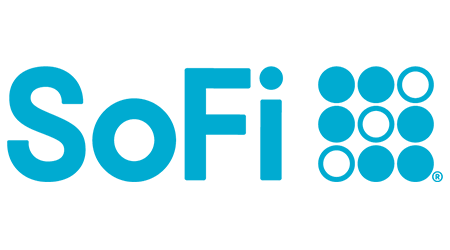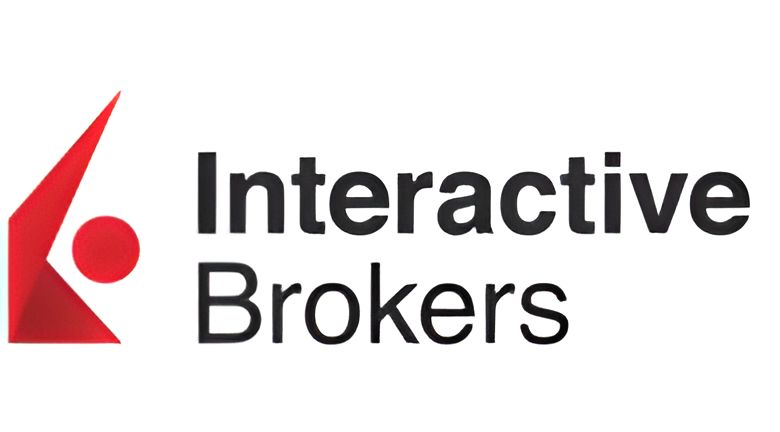
- Trade stocks, options, ETFs, mutual funds, alternative asset funds
- $0 commission on stocks, ETFs and options with no options contract fees
- Get up to $1,000 in stock when you open and fund a new account within 30 days
- Access to a financial planner
Nasdaq is a financial data & stock exchanges business based in the US. Nasdaq shares (NDAQ) are listed on the NASDAQ and all prices are listed in US Dollars. Its last market close was $73.50 – an increase of 1.83% over the previous week. Nasdaq employs 9,162 staff and has a trailing 12-month revenue of around $7.4 billion.



The Finder Score crunches 147 key metrics we collected directly from 18+ brokers and assessed each provider’s performance based on nine different categories, weighing each metric based on the expertise and insights of Finder’s investment experts. We then scored and ranked each provider to determine the best brokerage accounts.
We update our best picks as products change, disappear or emerge in the market. We also regularly review and revise our selections to ensure our best provider lists reflect the most competitive available.
Paid non-client promotion. Finder does not invest money with providers on this page. If a brand is a referral partner, we're paid when you click or tap through to, open an account with or provide your contact information to the provider. Partnerships are not a recommendation for you to invest with any one company. Learn more about how we make money.
Finder is not an advisor or brokerage service. Information on this page is for educational purposes only and not a recommendation to invest with any one company, trade specific stocks or fund specific investments. All editorial opinions are our own.
| Latest market close | $73.50 |
|---|---|
| 52-week range | $57.31 - $83.87 |
| 50-day moving average | $76.77 |
| 200-day moving average | $74.51 |
| Wall St. target price | $83.06 |
| PE ratio | 37.399 |
| Dividend yield | $0.94 (1.34%) |
| Earnings per share (TTM) | $1.93 |
The technical analysis gauge below displays real-time ratings for the timeframes you select. This is not a recommendation, however. It represents a technical analysis based on the most popular technical indicators: Moving Averages, Oscillators and Pivots. Finder might not concur and takes no responsibility.
This chart is not advice or a guarantee of success. Rather, it gauges the real-time recommendations of three popular technical indicators: moving averages, oscillators and pivots. Finder is not responsible for how your stock performs.
Historical closes compared with the close of $72.69 from 2025-04-22
| 1 week (2025-04-17) | 0.71% |
|---|---|
| 1 month (2025-03-25) | -6.41% |
| 3 months (2025-01-24) | -10.43% |
| 6 months (2024-10-25) | -2.68% |
| 1 year (2024-04-24) | 18.20% |
|---|---|
| 2 years (2023-04-24) | 32.38% |
| 3 years (2022-04-22) | 36.56% |
| 5 years (2020-04-24) | 121.59% |
Valuing Nasdaq stock is incredibly difficult, and any metric has to be viewed as part of a bigger picture of Nasdaq's overall performance. However, analysts commonly use some key metrics to help gauge the value of a stock.
Nasdaq's current share price divided by its per-share earnings (EPS) over a 12-month period gives a "trailing price/earnings ratio" of roughly 37x. In other words, Nasdaq shares trade at around 37x recent earnings.
That's relatively high compared to, say, the trailing 12-month P/E ratio for the NASDAQ 100 at the end of 2019 (27.29). The high P/E ratio could mean that investors are optimistic about the outlook for the shares or simply that they're over-valued.
Nasdaq's "price/earnings-to-growth ratio" can be calculated by dividing its P/E ratio by its growth – to give 1.4617. A low ratio can be interpreted as meaning the shares offer better value, while a higher ratio can be interpreted as meaning the shares offer worse value.
The PEG ratio provides a broader view than just the P/E ratio, as it gives more insight into Nasdaq's future profitability. By accounting for growth, it could also help you if you're comparing the share prices of multiple high-growth companies.
Nasdaq's EBITDA (earnings before interest, taxes, depreciation and amortisation) is $2.6 billion.
The EBITDA is a measure of a Nasdaq's overall financial performance and is widely used to measure a its profitability.
| Revenue TTM | $7.4 billion |
|---|---|
| Operating margin TTM | 27.59% |
| Gross profit TTM | $4.6 billion |
| Return on assets TTM | 4% |
| Return on equity TTM | 10.12% |
| Profit margin | 15.1% |
| Book value | $19.46 |
| Market Capitalization | $41.5 billion |
TTM: trailing 12 months
Environmental, social and governance (known as ESG) criteria are a set of three factors used to measure the sustainability and social impact of companies like Nasdaq.
When it comes to ESG scores, lower is better, and lower scores are generally associated with lower risk for would-be investors.
Total ESG risk: 16.08
Socially conscious investors use ESG scores to screen how an investment aligns with their worldview, and Nasdaq's overall score of 16.08 (as at 12/31/2018) is excellent – landing it in it in the 11st percentile of companies rated in the same sector.
ESG scores are increasingly used to estimate the level of risk a company like Nasdaq is exposed to within the areas of "environmental" (carbon footprint, resource use etc.), "social" (health and safety, human rights etc.), and "governance" (anti-corruption, tax transparency etc.).
Environmental score: 4.54/100
Nasdaq's environmental score of 4.54 puts it squarely in the 5th percentile of companies rated in the same sector. This could suggest that Nasdaq is a leader in its sector terms of its environmental impact, and exposed to a lower level of risk.
Social score: 10.23/100
Nasdaq's social score of 10.23 puts it squarely in the 5th percentile of companies rated in the same sector. This could suggest that Nasdaq is a leader in its sector when it comes to taking good care of its workforce and the communities it impacts.
Governance score: 11.31/100
Nasdaq's governance score puts it squarely in the 5th percentile of companies rated in the same sector. That could suggest that Nasdaq is a leader in its sector when it comes to responsible management and strategy, and exposed to a lower level of risk.
Controversy score: 2/5
ESG scores also evaluate any incidences of controversy that a company has been involved in. Nasdaq scored a 2 out of 5 for controversy – the second-highest score possible, reflecting that Nasdaq has, for the most part, managed to keep its nose clean.
Nasdaq Inc was last rated for ESG on: 2019-01-01.
| Total ESG score | 16.08 |
|---|---|
| Total ESG percentile | 10.96 |
| Environmental score | 4.54 |
| Environmental score percentile | 5 |
| Social score | 10.23 |
| Social score percentile | 5 |
| Governance score | 11.31 |
| Governance score percentile | 5 |
| Level of controversy | 2 |
Dividend payout ratio: 34.04% of net profits
Recently Nasdaq has paid out, on average, around 0% of net profits as dividends. That has enabled analysts to estimate a "forward annual dividend yield" of 0% of the current stock value. This means that over a year, based on recent payouts (which are sadly no guarantee of future payouts), Nasdaq shareholders could enjoy a 0% return on their shares, in the form of dividend payments. In Nasdaq's case, that would currently equate to about $0.94 per share.
While Nasdaq's payout ratio might seem fairly standard, it's worth remembering that Nasdaq may be investing much of the rest of its net profits in future growth.
Nasdaq's most recent dividend payout was on 27 March 2025. The latest dividend was paid out to all shareholders who bought their shares by 13 March 2025 (the "ex-dividend date").
Nasdaq's shares were split on a 3:1 basis on 28 August 2022 . So if you had owned 1 share the day before before the split, the next day you'd have owned 3 shares. This wouldn't directly have changed the overall worth of your Nasdaq shares – just the quantity. However, indirectly, the new 66.7% lower share price could have impacted the market appetite for Nasdaq shares which in turn could have impacted Nasdaq's share price.
Over the last 12 months, Nasdaq's shares have ranged in value from as little as $57.3115 up to $83.8702. A popular way to gauge a stock's volatility is its "beta".
Beta is a measure of a share's volatility in relation to the market. The market (NASDAQ average) beta is 1, while Nasdaq's is 1.03. This would suggest that Nasdaq's shares are a little bit more volatile than the average for this exchange and represent, relatively-speaking, a slightly higher risk (but potentially also market-beating returns).
Nasdaq, Inc. operates as a technology company that serves capital markets and other industries worldwide. It operates in three segments: Capital Access Platforms, Financial Technology, and Market Services. The company distributes historical and real-time market data; develops and licenses Nasdaq-branded indices and financial products; investor relations intelligence, governance solutions, and sustainability solution products for public and private companies and organizations; and insights and workflow solutions, as well as operates listing platforms. It also offers Verafin, a cloud-based platform to detect, investigate, and report money laundering and financial frauds; AxiomSL, a risk data management and regulatory reporting solution; surveillance solutions, including a SaaS platform to assist in complying with market rules, regulations, and internal market surveillance policies; Calypso, a platform providing cross-asset, front-to-back trading, treasury, risk, and collateral management solutions; and handles assets comprising cash equities, equity derivatives, currencies, various interest-bearing securities, commodities, energy products, and digital currencies; and trade management and colocation services. In addition, the company provides equity derivative trading and clearing, cash equity trading, fixed income and commodities trading and clearing, and currency trading services; and operates various exchanges, including derivatives, commodities, cash equity, debt, structured products, and exchange traded products; and clearing, settlement, and central depository services. The company was formerly known as The NASDAQ OMX Group, Inc.
Steps to owning and managing PYPL, with 24-hour and historical pricing before you buy.
Steps to owning and managing JPM, with 24-hour and historical pricing before you buy.
Steps to owning and managing BLK, with 24-hour and historical pricing before you buy.
Steps to owning and managing WFC, with 24-hour and historical pricing before you buy.
Steps to owning and managing V, with 24-hour and historical pricing before you buy.
Steps to owning and managing MA, with 24-hour and historical pricing before you buy.
Steps to owning and managing MS, with 24-hour and historical pricing before you buy.
Steps to owning and managing GS, with 24-hour and historical pricing before you buy.
Steps to owning and managing BAC, with 24-hour and historical pricing before you buy.
Steps to owning and managing C, with 24-hour and historical pricing before you buy.